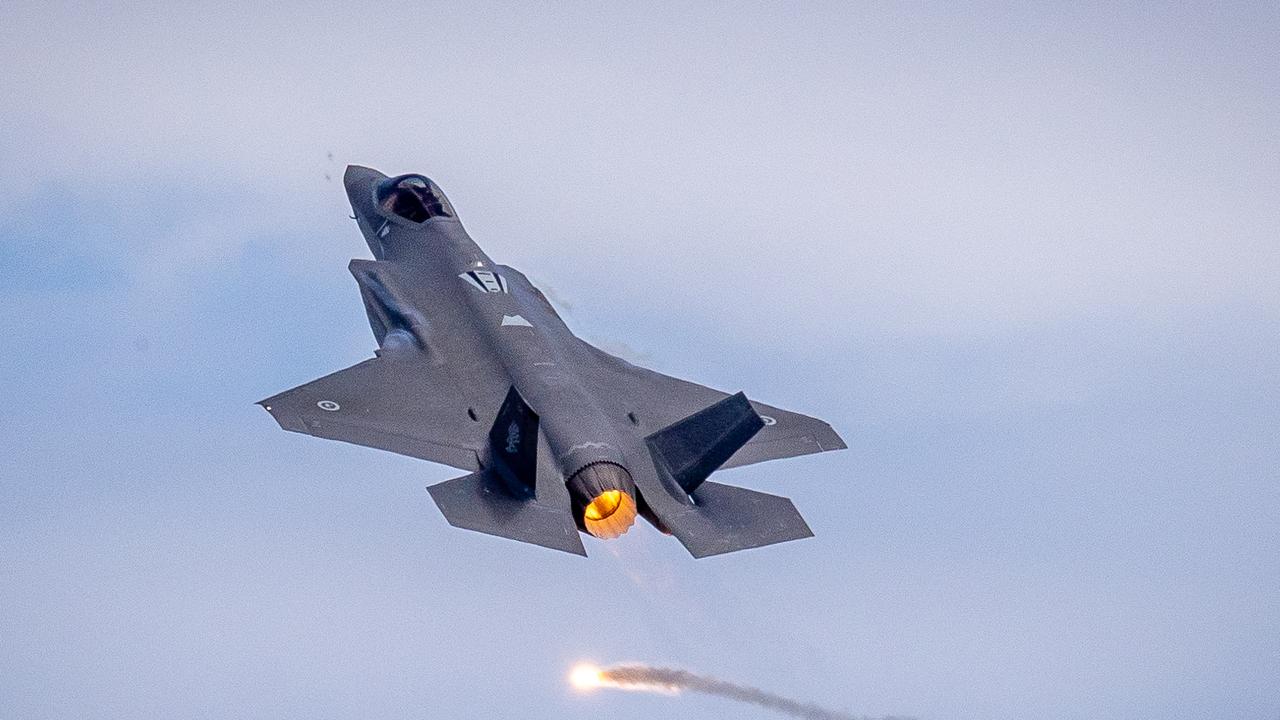[ad_1] Wild 911 calls from when an F-35 military plane went missing showed a befuddled neighbour reported having “a pilot in the house” — and the pi
[ad_1]
Wild 911 calls from when an F-35 military plane went missing showed a befuddled neighbour reported having “a pilot in the house” — and the pilot admitting he had no idea where the A140 million stealth jet now was.
The New York Post reports the four-minute clip caught a 911 dispatcher struggling to make sense of what the ejected pilot and the man whose South Carolina house he landed in were trying to explain.
“We got a pilot in the house, and I guess he landed in my backyard, and we’re trying to see if we could get an ambulance to the house, please,” the homeowner said.
The dispatcher initially seemed taken aback by the call, saying: “I’m sorry — what happened?”
The pilot then got on the phone, telling the 911 operator that he was 47 years old and that he was feeling “OK” after descending with a parachute an estimated 2000 feet (610m) — but he complained that his back hurt.
“Ma’am, a military jet crashed. I’m the pilot. We need to get rescue rolling,” the aviator said.
“I’m not sure where the aeroplane is. It would have crash-landed somewhere. I ejected.”
The pilotless fighter jet kept flying for 60 miles (97km) at an altitude of 1000 feet (304m) before crashing in a rural area near Indiantown — but it took the military more than a day to find the debris field after asking people on social media for help.
In a separate 8-minute dispatch call released on Thursday, an unidentified official tried explaining that they had “a pilot with his parachute” but no information about what happened to his plane. The caller said “the pilot lost sight of it on his way down due to the weather.”
The official also recalled hearing a “rather loud noise” earlier that “sounded something like a tornado, possibly a plane.”
Eyewitnesses on the ground reported seeing the plane flying “almost inverted” about 100 feet in the air before hearing a loud boom.
The jet, described by Lockheed Martin on its website as the “most lethal, stealthy and survivable aircraft,” belongs to a training squadron of the 2nd Marine Aircraft Wing.
It took off from Joint Base Charleston on Sunday afternoon as part of what was billed as a routine training flight, officials said.
The pilot at the controls was described by the Marines as a service member with decades of flying experience.
The pilot, who has not been identified, was taken to a hospital after the crash and discharged Monday, Pentagon officials said.
The incident is still under investigation and results from an official review board could take months.
But the Marine Corps said on Thursday that flight control software on fighter jets intended to protect pilots in emergencies could explain how the F-35 managed to stay aloft after the pilot ejected.
“If the jet is stable in level flight, the jet will attempt to stay there. If it was in an established climb or descent, the jet will maintain a 1G state in that climb or descent until commanded to do something else,” the Marine Corps said in a statement. “This is designed to save our pilots if they are incapacitated or lose situational awareness.”
The military said the safety feature may not only have saved the pilot’s life, but also the lives of people on the ground.
“The good news is it appeared to work as advertised. The other bit of silver lining in this case is that through the F-35 flying away it avoided crashing into a densely populated area surrounding the airport, and fortunately crashed into an empty field and forested area,” the statement said.
It is still unknown why the multimillion-dollar aircraft wasn’t tracked as it continued its flight over South Carolina and how it could take more than a day to locate a massive fighter jet that had flown over populated areas.
The Marines said features that wipe clean a jet’s secure communications in case of an ejection — a feature designed to protect both the pilot’s location and the plane’s classified systems – might be partially to blame.
“Normally, aircraft are tracked via radar and transponder codes,” the Marines said. “Upon pilot ejection, the aircraft is designed to erase (or ‘zeroize’) all secure communication.”
This story originally appeared on the New York Post and was republished with permission
[ad_2]
Source link



COMMENTS